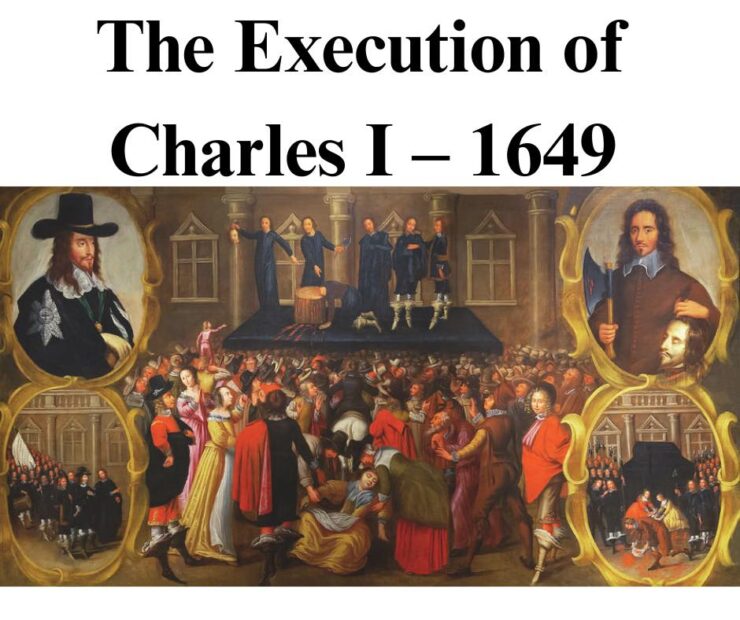
The Execution of Charles I – 1649
On 30 January 1649, King Charles I was executed outside the Banqueting House in Whitehall, London. This unprecedented event marked the first time a reigning English monarch was tried and executed by his own subjects. 
Background:
The execution followed the English Civil War, a conflict between the monarchy and Parliament over governance and authority. Charles I was tried and found guilty of high treason by the High Court of Justice.
Trial and Execution:
• Charles was accused of attempting to “uphold in himself an unlimited and tyrannical power to rule according to his will, and to overthrow the rights and liberties of the people” .
• He refused to recognize the court’s authority, asserting that no court had jurisdiction over a monarch.
• Despite his objections, he was found guilty and sentenced to death.  
Final Moments:
• On the day of his execution, Charles wore two shirts to prevent the cold from causing him to shiver, which might be mistaken for fear.
• He declared himself “the martyr of the people” and expressed his belief in the divine right of kings.
• After a brief speech, he was beheaded with a single blow. 
Aftermath:
• The monarchy was abolished, and the Commonwealth of England was established under Oliver Cromwell.
• Charles’s execution sent shockwaves across Europe and had a profound impact on the future of the British monarchy and governance. 
The execution of Charles I remains one of the most significant and controversial events in English history, symbolizing the struggle between absolute monarchy and the quest for a more balanced governance.
